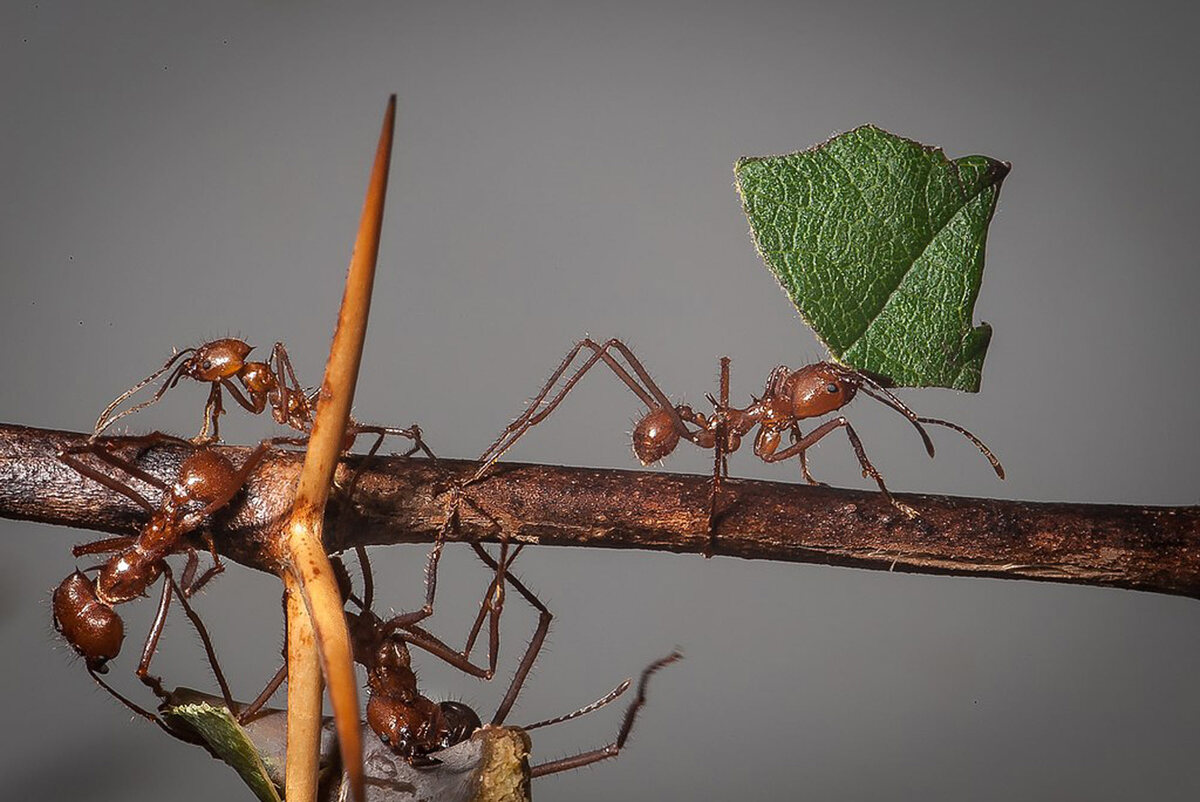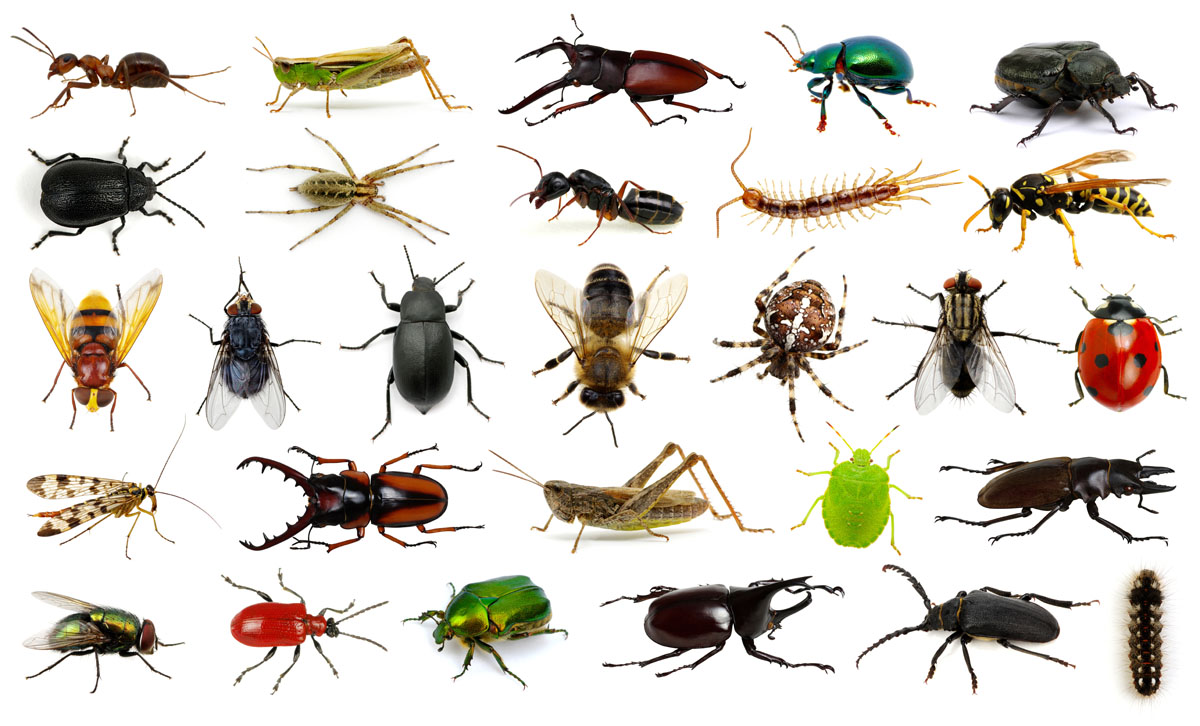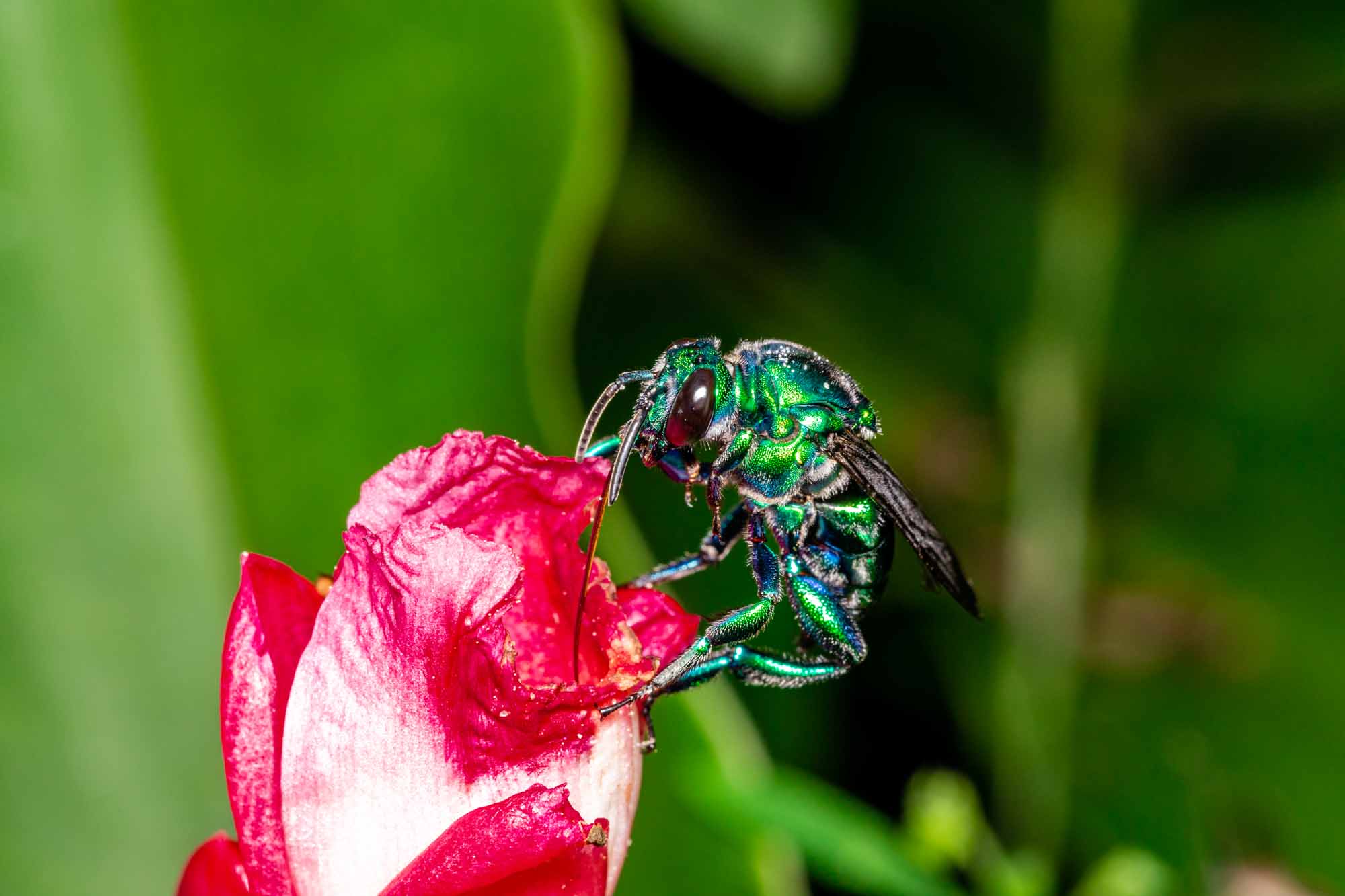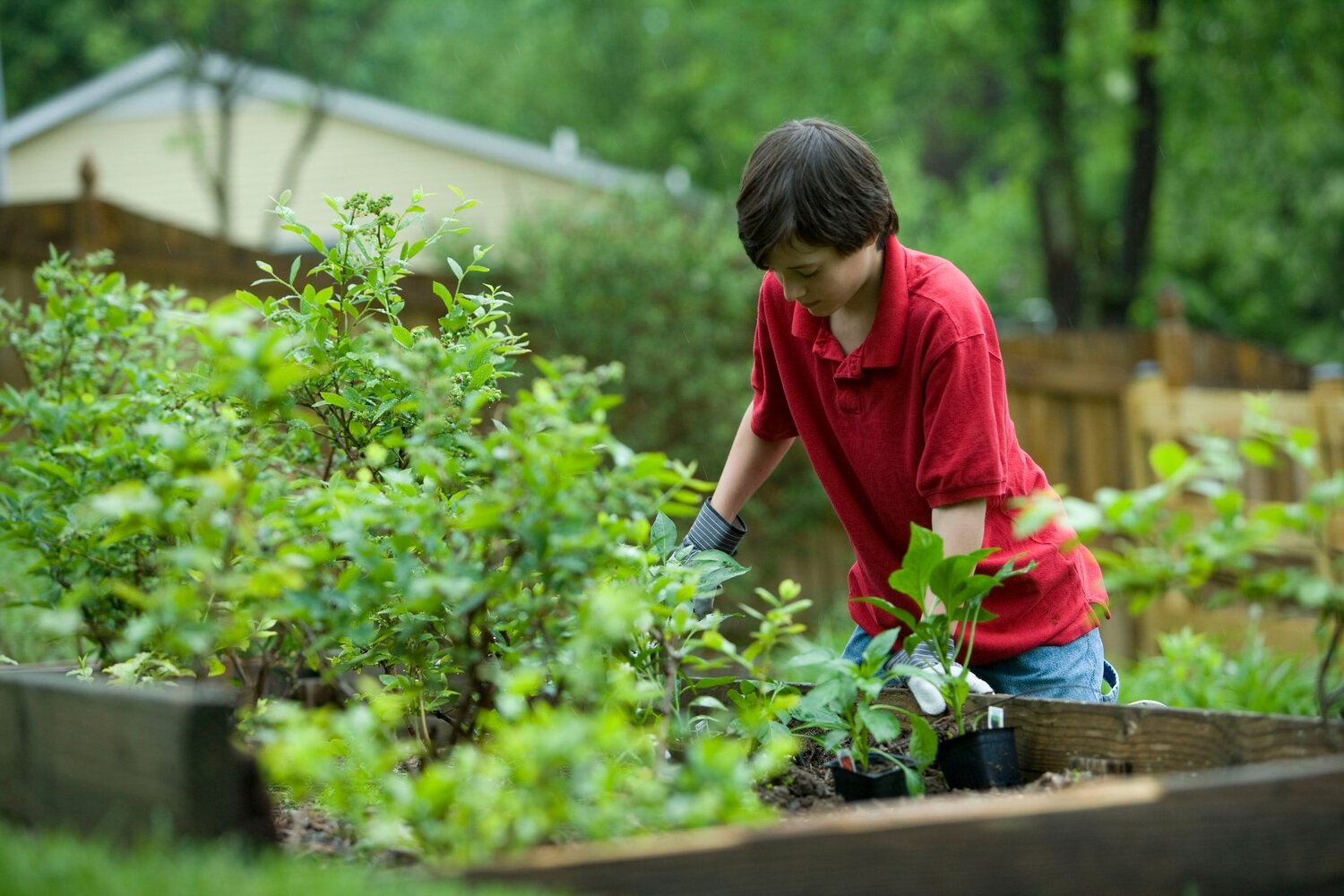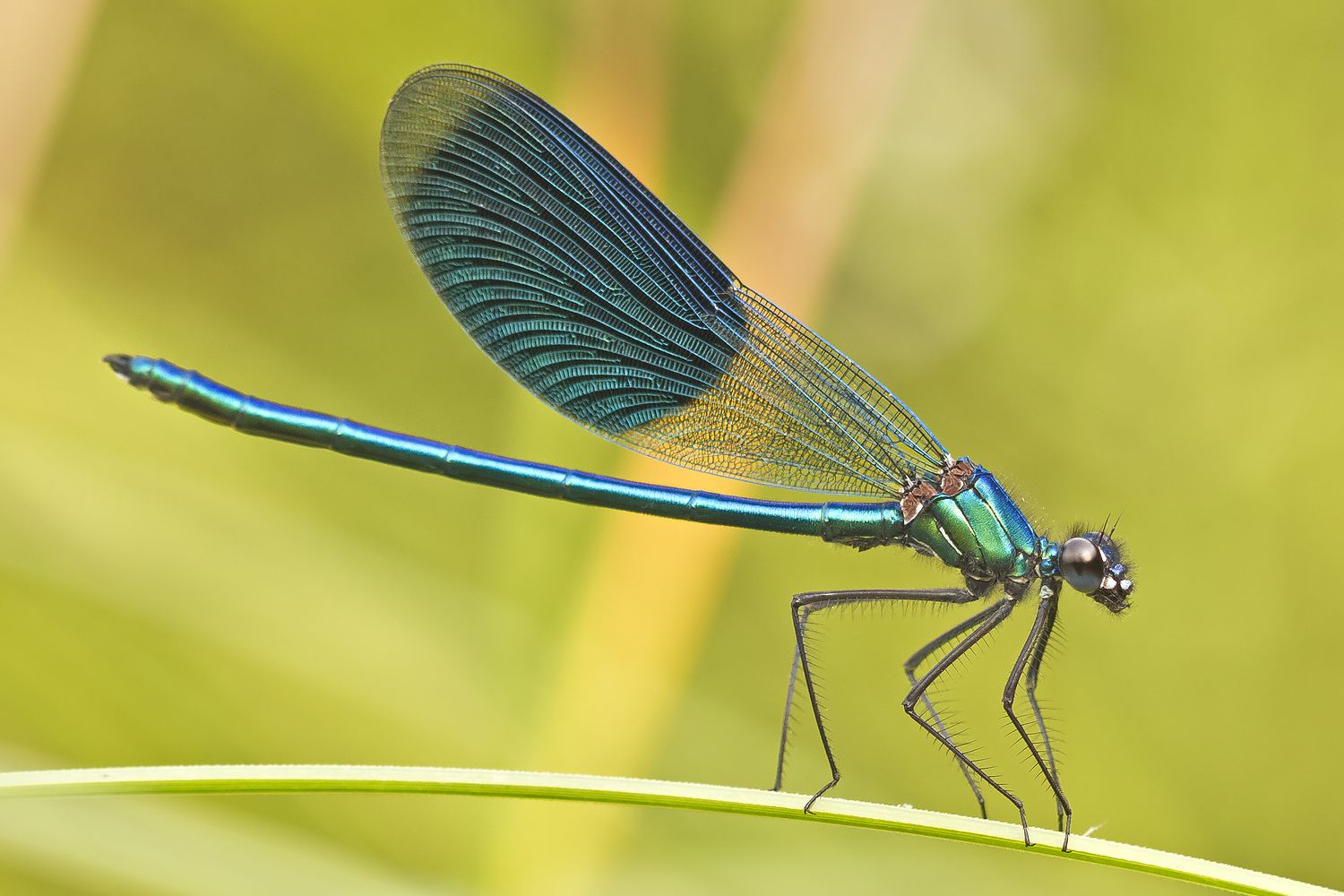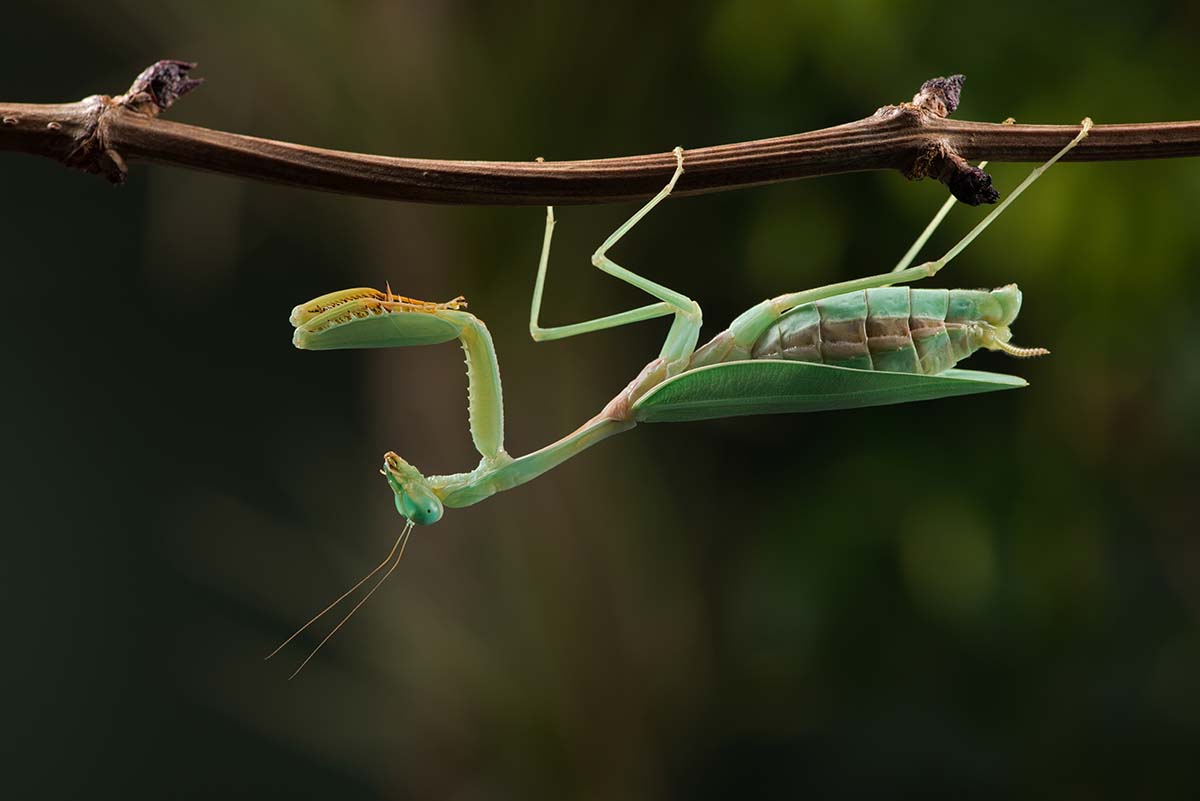Home>Gardening News and Trends>Latest News>How Many Insects Per Human


Latest News
How Many Insects Per Human
Modified: January 22, 2024
Stay informed with the latest news on the number of insects per human. Discover fascinating insights and updates on this important topic.
(Many of the links in this article redirect to a specific reviewed product. Your purchase of these products through affiliate links helps to generate commission for Chicagolandgardening.com, at no extra cost. Learn more)
Table of Contents
Introduction
Insects are fascinating creatures that play a vital role in the ecosystem. From pollinating plants to recycling organic matter, they contribute to the balance and sustainability of our planet. However, recent concerns about declining insect populations have raised questions about their future and the potential impact on humans.
It is estimated that there are more than one million known insect species, with millions more yet to be discovered. They are found in almost every habitat on Earth, from tropical rainforests to arid deserts. Insects have adapted and evolved over millions of years, occupying various ecological niches and fulfilling unique roles in the ecosystem.
Despite their small size, insects have a significant impact on human lives. They provide essential ecosystem services such as pollination, pest control, and nutrient recycling. Many of our staple crops and flowering plants rely on insects for pollination, ensuring the production of fruits, vegetables, and seeds. Without insects, our food supply would be severely compromised.
Estimating the global population of insects is a complex task. With their vast numbers and wide distribution, it is challenging to determine an exact figure. However, scientists have made efforts to estimate the number of insects per human on Earth. These calculations provide valuable insights into insect populations and their potential relationship with human populations.
Understanding the factors affecting insect populations is crucial for addressing the decline in their numbers. Several factors, including habitat loss, climate change, pesticide use, and pollution, have contributed to the decline of insect populations. By identifying and mitigating these factors, we can help protect and conserve insect populations.
In this article, we will explore the estimated number of insects per human on Earth and examine the regional variations in insect populations. We will also discuss the impact of insects on human lives and the future outlook for insect populations. By shedding light on the importance of insects and their current challenges, we hope to inspire action and promote the conservation of these remarkable creatures.
Importance of Insects
Insects play a crucial role in maintaining the delicate balance of ecosystems and are an integral part of Earth’s biodiversity. They have a profound impact on various aspects of human life and the environment. Let’s delve into the significance of insects:
Pollination: One of the most crucial roles of insects is pollination. Bees, butterflies, beetles, and other pollinators transfer pollen from one flower to another, facilitating the reproduction of flowering plants. This process is essential for the production of fruits, vegetables, and seeds. Without insect pollinators, many plant species and our food supply would decline significantly.
Pest Control: Insects such as ladybugs, lacewings, and certain wasp species act as natural predators of pests that harm crops. They help keep populations of harmful insects in check, reducing the need for chemical pesticides. This natural pest control service provided by insects is not only environmentally friendly but also economically beneficial for farmers.
Decomposition and Nutrient Cycling: Insects, particularly species like beetles and flies, play a key role in breaking down dead organic matter. They accelerate the decomposition process, releasing essential nutrients back into the soil. This nutrient cycling is crucial for maintaining healthy ecosystems and supporting plant growth.
Food Chain Support: Insects serve as a vital food source for many animals, including birds, reptiles, amphibians, and mammals. They occupy the lower levels of the food chain and provide nutrition to higher-level predators. Insects’ abundance and diversity ensure the stability of higher trophic levels and the overall functioning of ecosystems.
Medicinal and Biotechnological Potential: Insects have remarkable biochemical properties that have the potential to benefit humanity. Many insects produce compounds with medicinal properties that are used in the development of drugs. For example, the anti-blood clotting property of leech saliva has been utilized in medicine. Insect enzymes and proteins also have applications in biotechnology and various industrial processes.
Scientific Research and Education: Insects provide excellent subjects for scientific research. Their diversity, behavior, and physiological adaptations offer valuable insights into evolutionary processes and ecological relationships. Studying insects also helps us understand the principles of biology and can inspire curiosity and interest in nature among children and adults alike.
The importance of insects cannot be overstated. Their ecological services and contributions are vital for the functioning of ecosystems and for supporting human well-being. Protecting and preserving insect populations is essential for the long-term sustainability of our planet.
Estimating the Global Insect Population
Estimating the global population of insects is a complex task due to their incredible abundance and vast diversity. Nevertheless, scientists have made efforts to estimate the number of insects on Earth and gain insights into their population dynamics.
One approach to estimating the global insect population is through extrapolation based on scientific sampling. Researchers collect data on insect populations from various regions and habitats, and then extrapolate these findings to estimate the total global population. This method requires careful consideration of factors such as insect species richness, habitat diversity, and sampling biases.
Another method involves using mathematical models to estimate insect populations based on available data. These models take into account factors such as reproductive rates, mortality rates, and habitat suitability. While these models provide valuable insights, they are often limited by the quality and availability of data.
A landmark study published in the journal Science in 2019 estimated that there are approximately 1.4 billion insects per person on Earth. This estimation was based on a comprehensive analysis of insect biomass data from multiple regions around the world. It emphasized the importance of considering the mass of insects rather than just their numbers, as mass is a critical factor in their ecological impact.
The study also highlighted the regional variations in insect populations. For instance, tropical regions were found to have higher insect biomass compared to temperate regions. This is attributed to the favorable climatic conditions and higher plant diversity in tropical areas, which provide abundant resources for insect populations.
However, it is important to note that these estimates are subject to uncertainty due to the challenges in collecting accurate data and the inherent variability of insect populations across space and time. The true global insect population may differ from current estimates, and further research is needed to refine our understanding of insect populations on a global scale.
The decline in insect populations observed in certain regions has raised concerns about their overall status. However, it is important to differentiate between regional declines and global population trends. While some insect populations may be facing significant declines due to human activities and environmental changes, other regions may still have relatively stable or even increasing insect populations.
Continued research and monitoring efforts are essential to better understand the global insect population and to identify and address the factors contributing to declines. By improving our knowledge of insect populations, we can develop strategies to protect and conserve these vital creatures for the benefit of ecosystems and human well-being.
Factors Affecting Insect Populations
In recent years, there has been growing concern about the decline of insect populations worldwide. Numerous factors contribute to this decline, and understanding these factors is crucial for developing strategies to mitigate their impact. Let’s explore some of the key factors affecting insect populations:
Habitat Loss and Fragmentation: One of the primary drivers of declining insect populations is the loss and fragmentation of their natural habitats. Deforestation, urbanization, and agricultural expansion lead to the destruction and fragmentation of ecosystems, reducing the available habitat for insects. As their habitat diminishes, insect populations suffer from decreased resources, limited movement, and increased vulnerability to other threats.
Climate Change: Rapid climate change poses significant challenges to insect populations. Rising temperatures, altered precipitation patterns, and extreme weather events disrupt the delicate balance of ecosystems. Insects rely on specific temperature and humidity conditions for their survival and reproduction. Climate change can disrupt these conditions, affecting their behavior, life cycles, and distribution.
Pesticide Use: Widespread use of chemical pesticides in agriculture and urban environments has a severe impact on insect populations. Pesticides intended to control pests often affect non-target insects, leading to unintended harm. Bees and other pollinators are particularly vulnerable, as they can come into contact with pesticide residues on flowers or through contaminated water sources. Pesticide exposure can disrupt reproduction, impair navigation and foraging abilities, and ultimately lead to population declines.
Pollution: Pollution, such as air and water pollution, also poses a threat to insect populations. Toxic substances released into the environment can accumulate in insects’ bodies, leading to various health issues and reduced reproductive success. Light pollution from artificial lights disrupts insect behavior and navigation, affecting their feeding, mating, and migration patterns.
Invasive Species: Invasive species can have a detrimental impact on native insect populations. Invasive insects can outcompete native species for resources or introduce diseases or parasites to which native species have no resistance. This can lead to significant declines in native insect populations, disrupting the balance of ecosystems.
Overexploitation: Some insects are targeted for commercial purposes, such as the collection of butterflies for the pet trade or the extraction of resources like silk or honey. Overexploitation can put immense pressure on insect populations, especially if sustainable practices are not followed. Unregulated harvesting can lead to population declines and even local extinctions.
Genetic Factors: Genetic factors can also influence insect populations. Inbreeding depression, caused by mating between closely related individuals, can reduce genetic diversity and weaken populations, making them more susceptible to diseases and environmental stressors.
These are just some of the factors affecting insect populations, and it is important to recognize the interconnectedness of these factors. Addressing these challenges and finding sustainable solutions is crucial to protect insect populations and ensure the health and functioning of ecosystems.
Insects per Human on Earth
Estimating the number of insects per human on Earth provides us with valuable insights into the vastness and significance of insect populations. While it is impossible to provide an exact figure, researchers have made efforts to estimate this ratio to understand the relative abundance of insects compared to the human population.
A study published in the journal Science estimated that there are approximately 1.4 billion insects per person on Earth. This estimation took into account the global biomass of insects and their distribution across different habitats and regions. It emphasized the importance of considering the mass of insects rather than just their numbers, as the ecological impact of insects is closely tied to their biomass.
The estimated ratio of insects per human illustrates the incredible abundance and ecological dominance of these tiny creatures. Insects outnumber humans by a significant margin, highlighting their vital role in the functioning of ecosystems. They play essential roles in pollination, pest control, decomposition, and nutrient cycling, which are crucial for maintaining the balance of ecosystems and supporting human welfare.
It is important to note that the ratio of insects per human can vary significantly in different regions and habitats. In tropical regions, insect populations tend to be more abundant compared to temperate regions due to the favorable climatic conditions and higher plant diversity. Similarly, areas with intact and diverse habitats are likely to have higher insect populations compared to areas affected by habitat degradation and fragmentation.
The estimation of insects per human is not meant to imply a direct relationship or competition between insects and humans. Instead, it highlights the sheer magnitude and importance of insect populations in sustaining ecosystems and human well-being. Insects provide us with invaluable ecosystem services, ensuring the production of food, maintaining plant diversity, and supporting the health of ecosystems.
However, it is essential to acknowledge that insect populations are facing challenges and declining in many regions. Factors such as habitat loss, climate change, pesticide use, and pollution have a significant impact on insect populations. To ensure the continued provision of ecosystem services and the long-term sustainability of insect populations, conservation efforts and sustainable practices are crucial.
By recognizing the abundance and significance of insects in relation to the human population, we can foster a deeper appreciation for these remarkable creatures and work towards their conservation. Investing in research, education, and sustainable practices can help protect and restore insect habitats, mitigate threats, and ensure a healthier coexistence with the vast world of insects.
Regional Variations in Insect Populations
When it comes to insect populations, there are significant regional variations across the globe. Factors such as climate, habitat diversity, and human activities contribute to these variations, leading to differences in the abundance and diversity of insects in different regions.
Tropical regions tend to have higher insect populations compared to temperate regions. The warm and humid conditions in tropical areas provide favorable habitats for a wide range of insect species. The high plant diversity in these regions offers abundant resources and niche opportunities for insects, resulting in greater species richness and population densities.
On the other hand, temperate regions experience seasonal changes and colder winters, which can limit insect activity and population sizes. Many insects in temperate regions have developed strategies to survive through diapause or migration, allowing them to persist through periods of harsh conditions. However, the overall population densities are generally lower compared to tropical regions.
Within each region, there can be further variations in insect populations based on habitat types. Insect populations thrive in diverse ecosystems such as rainforests, wetlands, and coral reefs, where food sources, shelter, and breeding sites are plentiful. These habitats support a wide array of insect species and showcase high insect biomass.
However, regions that have undergone significant habitat loss and degradation, such as due to deforestation or urbanization, may experience declines in insect populations. Destruction of natural habitats limits the resources available to insects and disrupts ecological interactions, ultimately leading to declines in population sizes and diversity.
Additionally, human activities such as agricultural practices and pesticide use can have considerable impacts on regional insect populations. Intensive agriculture may lead to the loss of natural habitats, increased pesticide usage, and disturbance of ecological balance. This can result in declines in beneficial insect species and an increase in pest populations, resulting in imbalances in ecosystems.
It is worth noting that even within a single region, variations in insect populations can occur at smaller scales. Local environmental factors, microhabitats, and ecological interactions can create microcosms of insect diversity and abundance within a larger region.
Understanding these regional variations in insect populations is crucial for conservation efforts. It helps identify regions with particularly high insect diversity and abundance that require protection. It also enables targeted conservation interventions to address specific threats and restore habitats where insect populations are declining.
By recognizing and appreciating the regional variations in insect populations, we can develop region-specific strategies for conservation and sustainable land management. Protecting diverse habitats, reducing pesticide use, promoting sustainable agriculture, and restoring degraded areas can contribute to the preservation and well-being of insect populations globally.
Impact of Insects on Humans
Insects have a significant impact on human lives, both positive and negative. Understanding their role and influence is crucial for recognizing their importance and implementing effective strategies for coexistence. Let’s explore the various ways in which insects affect humans:
Pollination and Food Production: Insects, particularly bees, butterflies, and other pollinators, play a crucial role in pollinating flowering plants. This process is essential for the production of fruits, vegetables, and seeds. Approximately 75% of the world’s food crops rely on insect pollination, making insects indispensable for food production and ensuring food security.
Pest Control: Insects such as ladybugs, lacewings, and predatory wasps act as natural controllers of pests. They prey on and control populations of harmful insects that damage crops, reducing the need for chemical pesticides. This natural pest control service provided by insects is not only environmentally friendly but also economically beneficial for farmers.
Ecological Balance and Biodiversity: Insects form a critical part of the ecological web, playing roles as pollinators, decomposers, and prey. Their interactions with other organisms help maintain the balance and stability of ecosystems. Insects also contribute to the overall biodiversity, as they represent a significant proportion of animal species on Earth. Their presence ensures the health and functioning of ecosystems.
Medical and Pharmaceutical Applications: Insects have provided numerous contributions to medicine and pharmaceuticals. Many insect species produce bioactive compounds with medicinal properties. For example, the venom of certain wasps and ants contains substances that have been used in pain relief and anti-inflammatory drugs. Additionally, insects such as maggots have been used beneficially in wound healing and tissue regeneration.
Scientific Research and Education: Insects provide rich opportunities for scientific research. Their incredible diversity, behavior, and physiological adaptations offer valuable insights into evolutionary processes and ecological relationships. Studying insects helps deepen our understanding of biology and provides a basis for conservation efforts. Furthermore, insects can inspire curiosity and interest in nature among children and adults, fostering environmental education and awareness.
Cultural and Aesthetic Value: Insects hold cultural and aesthetic value in many societies. They are featured in art, literature, and folklore, symbolizing various qualities such as transformation, resilience, and beauty. Insects also contribute to the enjoyment of outdoor spaces through their colors, diversity, and presence as part of the natural environment.
While insects provide numerous benefits to humans, it is important to acknowledge the negative impacts they can have as well. Some insects are vectors of diseases, such as mosquitoes spreading diseases like malaria, dengue fever, and Zika virus. Insects can also be agricultural pests, damaging crops and causing economic losses.
Overall, the impact of insects on humans is vast and multifaceted. Their contributions to pollination, food production, pest control, ecological balance, medicine, and cultural significance are invaluable. Recognizing and protecting insect populations is crucial for maintaining the health and well-being of ecosystems, ensuring sustainable food production, and advancing medical and scientific discoveries.
Future Outlook for Insect Populations
The future of insect populations is a topic of growing concern, given the observed declines in many regions around the world. As we look ahead, several key factors will shape the outlook for insect populations and their interactions with humans and ecosystems.
Conservation and Habitat Restoration: Implementing effective conservation measures and actively restoring habitats are essential for the future of insects. Protecting natural areas, creating wildlife corridors, and promoting sustainable land management practices can provide valuable refuges for insect populations. Restoring degraded habitats and increasing habitat connectivity can help reestablish critical conditions for insects to thrive.
Sustainable Agriculture and Pest Management: Adopting sustainable agricultural practices that minimize pesticide use and prioritize ecosystem health is crucial for the future of insect populations. Integrated Pest Management (IPM) strategies that rely on biological control, crop rotation, and habitat enhancement can help control pests while minimizing the negative impact on beneficial insects. Promoting agroecological approaches and organic farming can create healthier environments for both crops and insects.
Reducing Pollution and Climate Change Effects: Addressing pollution and mitigating the effects of climate change are key factors in securing the future of insect populations. Reducing air and water pollution can protect insect habitats and reduce the toxicity levels they are exposed to. Additionally, taking action to mitigate climate change by reducing greenhouse gas emissions can help minimize its detrimental impacts on insect populations, including shifts in their geographical distributions and disruptions to their life cycles.
Public Awareness and Education: Public awareness and education efforts are essential for fostering understanding and appreciation for insects. By promoting awareness of the value and importance of insects in ecosystems, highlighting their benefits, and raising concerns about their decline, we can inspire action at all levels. Engaging the public in citizen science projects, promoting insect-friendly gardening practices, and integrating insect-focused education into curricula can help instill a sense of stewardship for insects and their habitats.
Research and Monitoring: Continued research is crucial for understanding the complex dynamics of insect populations and the factors that influence them. Monitoring programs can provide valuable data on population trends, species distributions, and the impacts of threats. By expanding research efforts and monitoring networks, we can improve our understanding of insect populations and develop evidence-based strategies for their conservation.
While the current outlook for insect populations may seem challenging, there is hope for the future. Through concerted efforts by individuals, communities, governments, and organizations, we can reverse the declines and ensure the persistence of diverse and thriving insect populations. By recognizing the critical role of insects in sustaining ecosystems and human well-being, we can work towards a future where insects flourish, benefiting us and the planet as a whole.
Conclusion
Insects are remarkable creatures that play vital roles in ecosystems and have a profound impact on human lives. With their diverse species and vast populations, they provide essential ecosystem services such as pollination, pest control, decomposition, and nutrient cycling. Insects contribute to food production, maintain ecological balance, and offer numerous benefits in medicine and scientific research. They also hold cultural and aesthetic value in societies worldwide.
Despite their importance, insect populations are facing significant challenges. Habitat loss, climate change, pesticide use, pollution, and other factors have contributed to the decline of insect populations in many regions. However, regional and local variations in insect populations exist, highlighting the importance of conservation efforts tailored to specific environments.
The future outlook for insect populations depends on our commitment to their protection and conservation. Implementing sustainable practices in agriculture, reducing pollution, and mitigating climate change effects are crucial steps. Conservation and habitat restoration efforts play a pivotal role in ensuring the survival of insect populations. Public awareness, education, and research are also essential for fostering understanding, inspiring action, and developing evidence-based conservation strategies.
By recognizing the vital roles that insects play and the challenges they face, we can work towards a future where insect populations thrive and our ecosystems remain healthy. Preserving and restoring habitats, promoting sustainable practices, and raising awareness about the importance of insects are key to fostering a harmonious relationship between humans and the insect world.
